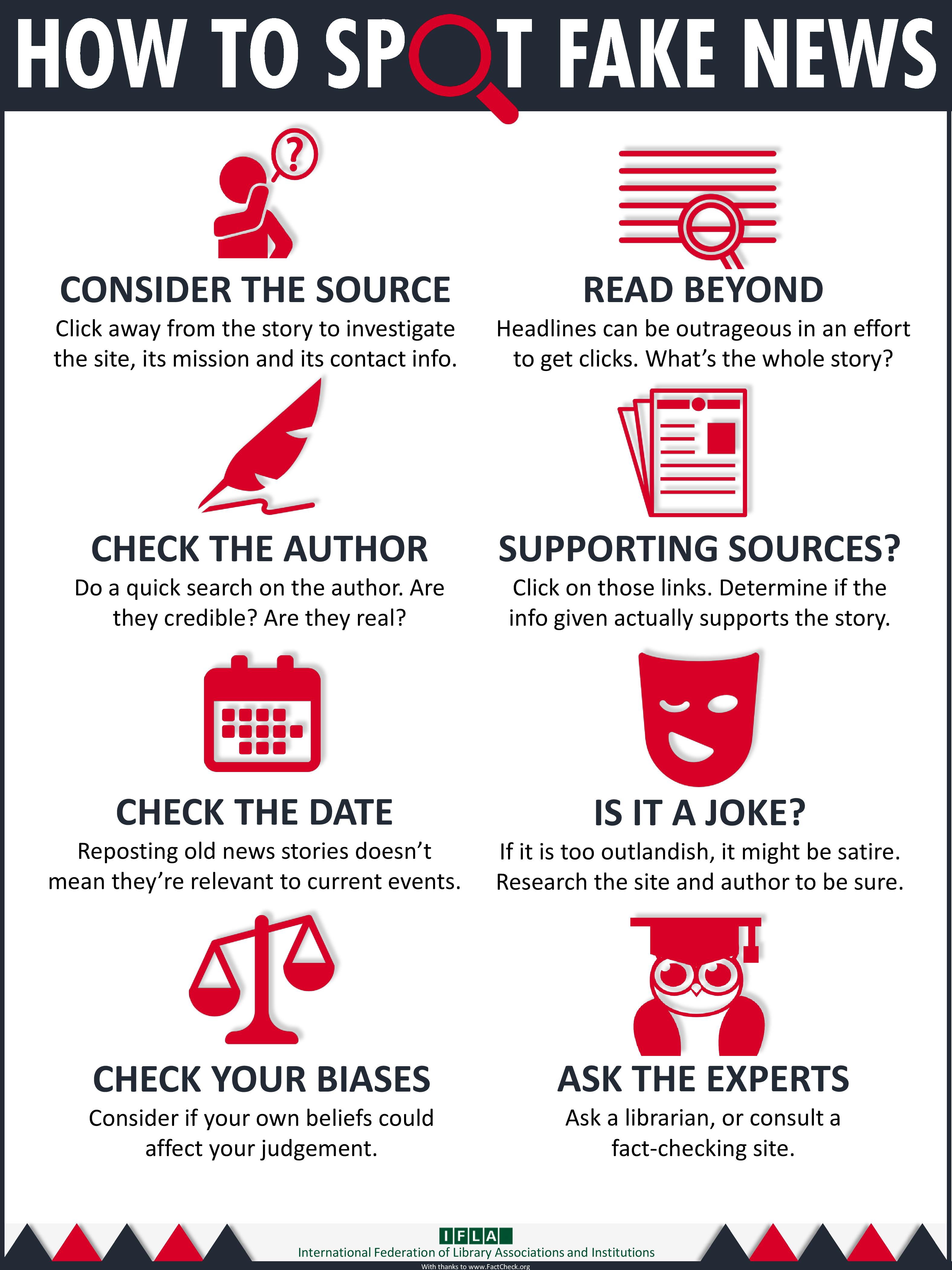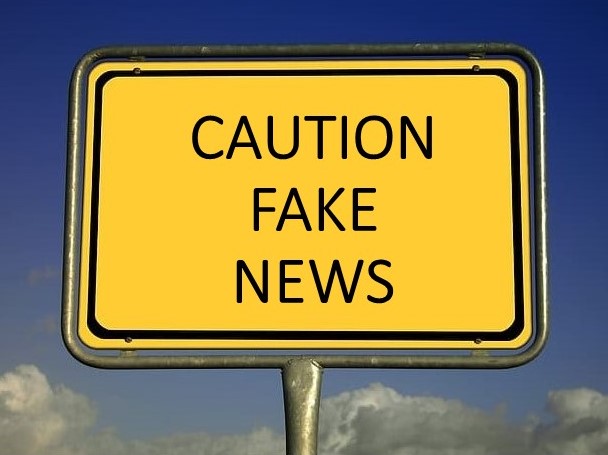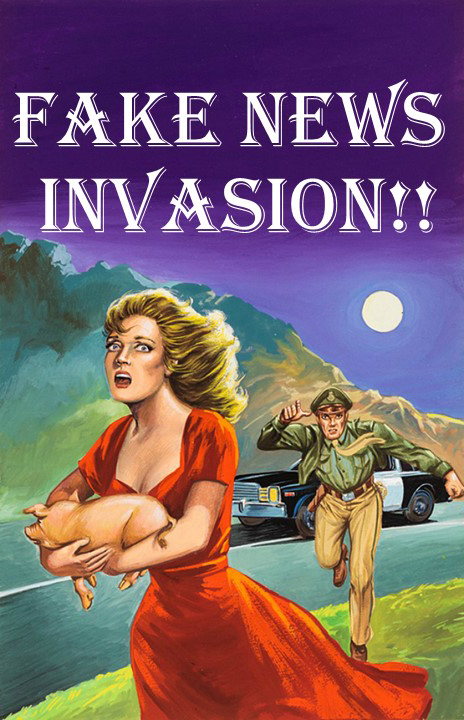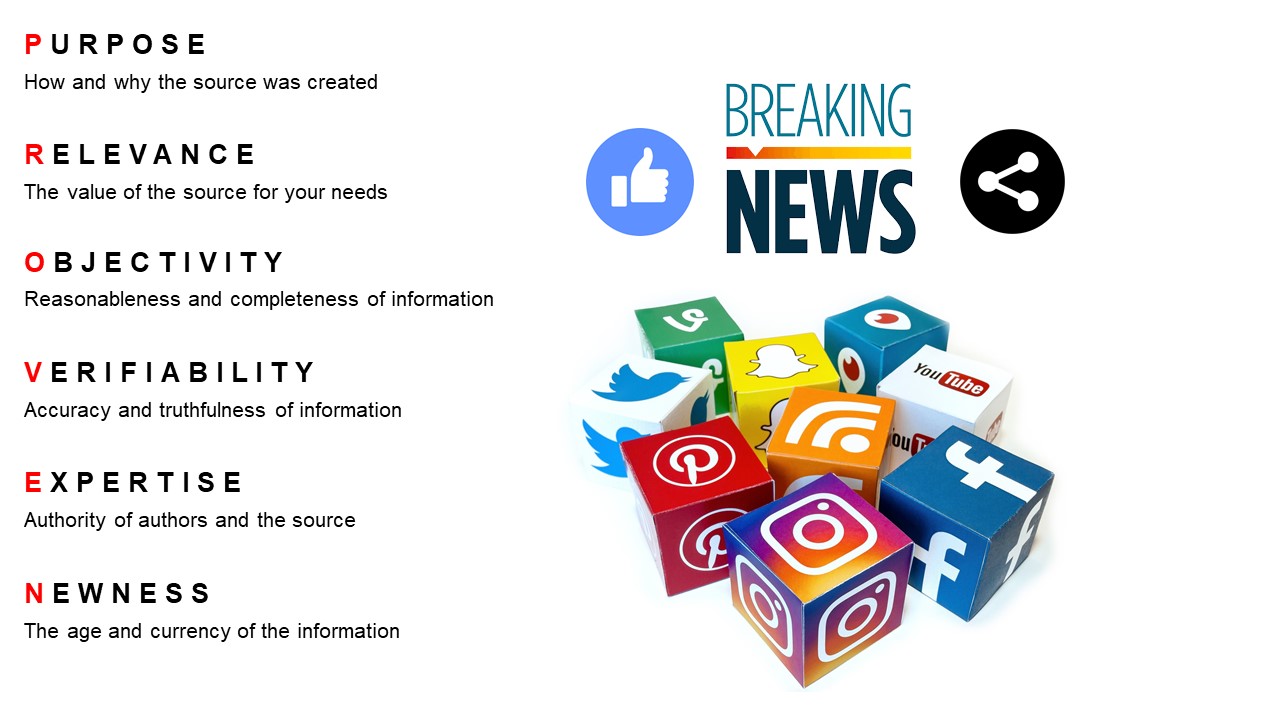
Fake News Guide Ask Us
Guide Sections
A Visual Take
What is Fake News?
Fake News is information that can't be verified and does not have authentic sources. In contemporary debates, the term Fake News has also been used to discredit, misdirect, undermine and create uncertainty around an issue.
There have been many fake news stories written to provoke, impassion, and mislead readers. As consumers of news we cannot be passive readers of information. It is very easy to launch a website and publish opinions under the guise of news. Blogs, social media and other platforms are constantly churning out misleading narratives. Fake news can become viral when readers share but do not take the time to verify the story.
In late 2016, Oxford Learner's Dictionaries selected “post-truth” as the word of the year. It was defined as “relating to or denoting circumstances in which objective facts are less influential in shaping public opinion than appeals to emotion and personal belief.” Be mindful that biases and fabrications appear in news content, especially content that covers controversial or politically charged topics.
Since fake news can have a kernel of truth, it may require deeper investigation and time commitment by the reader to arrive at the truth.
6 Categories of Fake News
1. Disinformation. This type of false news is a deliberate fabrication intent on misleading the reader. Often this type of fake news hosts malicious content, propaganda that attempts to advance the political goals of individuals or entities. Deepfakes are an emerging type of deliberate misinformation where audio and video are masterfully manipulated to misrepresent real individuals and distort events.
2. Misinformation. This type of fake news is also false but could just be inaccurate or mistaken reporting. Examples include falsely reported deaths, exaggerated archeological finds, disasters, or conflicts. False headlines fall under this category. A sensational headline is meant to draw people in, but the body of the article may say something different. This is called click bait.
3. Biased Reporting. Biased reporting tells a story the author wants to be true, rather than what is true, sometimes combining diverse facts as leverage to assert an opinion. In this example of a logical fallacy, since a) climate change can lead to major hurricanes but b) there has not been a significant increase in hurricanes then c) climate change isn't real.
4. Misuse of data. Fake news often relies on eye-catching graphics and charts where the data and findings are not supported by science.
5. Sloppy Reporting. Fake news stories can take bits and pieces from other news reports for the sake of a good headline and without fact checking before publication.
6. Satire. Satirical news or comedy often begins with an aspect of truth then purposefully twists it to comment on society. It often spreads quickly as real news.
Fact or Fiction?
Use this checklist to help evaluate news stories.
- Check Motivation
- Check URL
- Check Author
- Check Layout
- Check Sources
- Check for Bias: In the Source and Your Own
- Check Timeliness
- Check Coverage
Check Motivation
What is the motivation or purpose behind a news source? Try the following when vetting online content:
- Find the “About Us” section for the organization’s description, mission statement, staff directory, and contact information. Such information provides insight into the identity of the news provider and, if absent, raises suspicion.
- Pay attention to sponsored versus news content. If paid or sponsored content seamlessly blends in with news stories, making it challenging to distinguish between types of content, be skeptical of the source.
- Distinguish between entertainment and news. A satirical tone of publications, such as The Onion, The Beaverton, or The Manatee differentiates them from news. Fake news stories published on satirical sites bring attention to political and social issues. Entertainment news may or may not include disclaimers indicating its satirical purpose.
Check URL
What does the URL tell you about the news source? Here are the basic components of a URL:

Examples of popular top-level domains include .edu, .org, .net, .gov, .com, and .info but also country code domains, such as .ca or .uk. A URL containing a tilde ~ frequently means a personal website.
- Beware of strange-looking domain names with content after the top-level domain, such as .com.co or .ca.co. For example,
- Note that fake news sites often try to incorporate the names of real news sites by omitting letters or misspelling.
Who is linking to the content? Find out who is linking to the website by checking its backlinks. These will show the organizations and individuals linking to the content and can therefore provide clues about the quality of information, such as extreme bias and prejudice.
- Use these free tools to identify entities that link to the website: https://openlinkprofiler.org/ or https://moz.com/link-explorer.
Check Author
Does the story credit an author? Are the author’s credentials and professional background searchable? Keep in mind that fake news is often unattributed.
- Search the credentials, work experience, and publication record of the author. This professional record reflects the author’s credibility.
Check Layout
Does the layout of the news story look professional?
- Assess the headline and its tone. Fake news websites often use sensational headlines to provoke an emotional response.
- Review the quality and original sources of images. Fake news websites are notorious for recycling images from the web and doctoring visual content.
- Review the quality of the external links. Do they provide support for the story?
- Distinguish between sponsored and news content. If this is challenging, the content is likely fake news.
Check Sources
Who are the sources for the story? Are they first- or second-hand witnesses? Are their statements represented in quotes? If you cannot identify the sources in a simple search, this may be fake news.
- Search the claims, statements or quotes to find out who else is referencing the material in corroborating stories and to verify that the interviewees or witnesses are authentic.
Check for Bias: In the Source and Your Own
Source Bias. Whose viewpoint is being expressed and what perspectives are left out? What is the reputation of the news provider? Are they transparent about their political leanings?
You Own Bias. Are emotional or cognitive biases undermining your judgment? For instance, we routinely favor information that confirms our existing beliefs (confirmation bias) and prioritize information that we can quickly remember over other information (availability heuristic). Fake news sources exploit our existing biases and prejudices.
- Learn more about self-validating reasoning and how it influences our judgment in this article by Weir (2017).
- Learn more about the types of cognitive biases in this overview by Cherry (2019).
Check Timeliness
Does a story reflect current concerns or is it recycling and/or repackaging old facts? Fake news websites often recirculate older, sensational stories to get more hits and likes.
Check Coverage
Are other news outlets reporting this story? In today’s networked news environment, if no other reporters have picked up the story, it may be fake news. Also, news coverage can be biased based on geographic location, class, ethnicity, etc. For instance, American news tends to focus on Western issues and ignore the rest of the world.
Fact Checking Tools
Fact Checking Sites
The following sites allow you to verify the information you are reading and seeing in news reports, videos and other sources of information to help you separate fact from fiction.
FactsCan: Canada's political fact- checker
Browser Plug-ins
Project Fib (Chrome, for Facebook feed)
FakerFact (Firefox)
Fake News Guard (Chrome)
Check Images with Google
Resources for Information Literacy
The Short of It: Evaluate the Source

![]()
Further Readings
This New York Times article provides great ideas for generating classroom discussion around fake news and links to quality content on this topic: Evaluating sources in a ‘post-truth’ world: Ideas for teaching and learning about fake news.
As a guide to deepfakes, this Washington Post resource, Seeing isn’t believing: The fact checker’s guide to manipulate video, provides continually updated examples of different types of video and audio manipulation.
This Library of Congress Legal Report entitled Initiatives to Counter Fake News: Canada outlines Canada's national approach to countering fake news, and legal information.
Quizzes and Games
Factitious: From American University, a game in which you sort real news from the fake news.
Bad News: A choose- your-own-adventure game.
Fake It to Make It: Set a financial goal and write fake news stories to meet it.
Newsfeed Defenders: This media literacy game teaches players how to detect and disregard disinformation and misinformation.
Reality Check: The Game: A series of media literacy activities designed to help authenticate a source, compare sources and offers instruction on how to use tools like fact-checking sites and reverse image searches.
More Tools
Apathy is Boring is a non-partisan organization which strives to educate Canadian youth about democracy and engagement.
Coursera offers a beginner-level (13-hour) online course Making Sense of the News: News Literacy Lessons for Digital Citizens. Students gain skills in news evaluation and media literacy.
Canadian News Media Association has designed and developed a public awareness program entitled SPOT Fake News Online. The online project encourages readers to critically assess digital media and identify misleading or defamatory disinformation.
News Sources
UNB Libraries' Newspaper Subscriptions
UNB Libraries subscribe to numerous databases that search for reliable news media sources. Please refer to our Newspaper Collections and the Newspapers Guide for news sources and search tools.

Examples of Publicly Funded News Sources

- Aggie Sliwka (she/her)
- I am ready to support your research needs in person, via phone, email, and MS Teams.
- Librarian
- UNB Fredericton
- asliwka@unb.ca
- (506)-453-5017
Talk to me about your research and teaching needs including working with primary sources, literature searches, building a research question, evaluating online sources, effective reading and organizing sources, and more.
- Kim Vose Jones
- UNB Fredericton
- K.VoseJones@unb.ca
Last modified on July 19, 2023 14:25